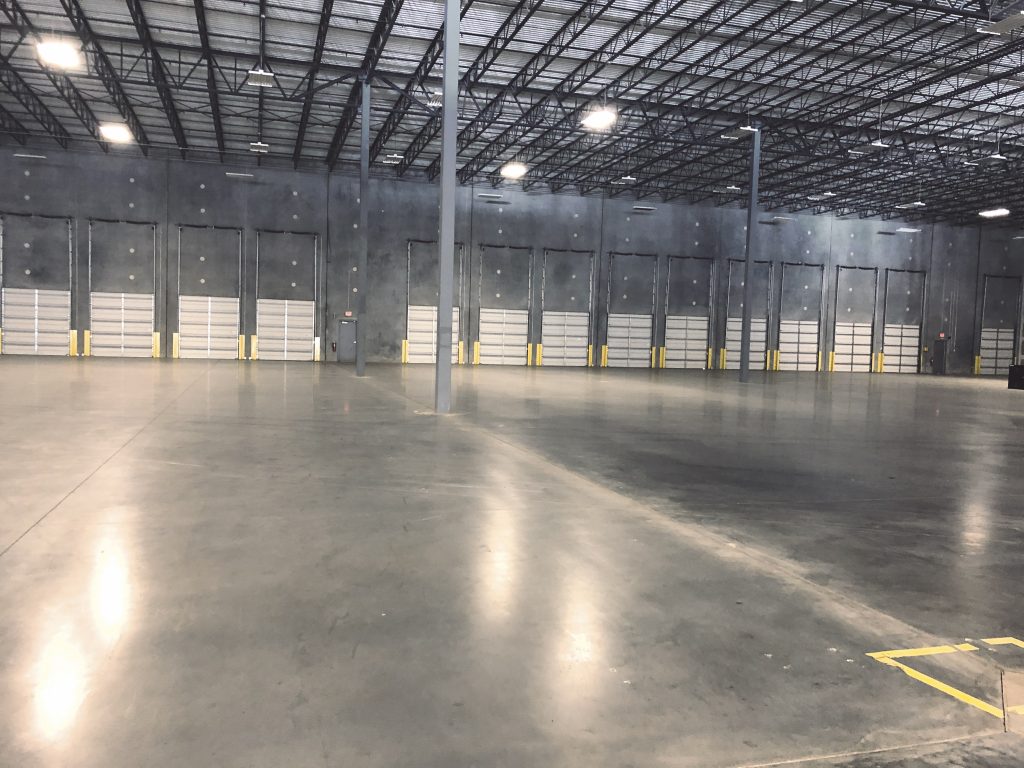Steven Silverman of TampaCommercial Real Estate sat on a panel of experts to discuss the state of the industrial real estate market in Tampa Bay Florida. This was part of an educational series held by the Greater Tampa Association of Realtors for the benefit of brokers and associates practicing commercial real estate. The other panelists were Pat Marzuli of Colliers and Julia Silva of Jones Lang La Salle.
It is one thing to read the market data and statistics but experience sometimes gives a different picture. All the panelists are practicing real estate brokers and were able to bring boots on the ground real-time experience to the discussion.
Here are my views on the subject: To understand the current state of Industrial real estate it is crucial to look at the supply and demand, Over the last three years over 8 million SF of new industrial space was delivered to Tampa Bay. Over 3.5 million SF were delivered in 2020 alone. That is the most industrial space delivered in 20 years. All this was new space delivered in the year that Coronavirus catapulted the economy into a new orbit. Logically, this much space coming onto the market would increase the market vacancy rate and reduce rental rates. That in fact did happen. Annual Rent Growth in the industrial sector fell slightly by 300 basis points. and is now roughly in line with the national average. At the same time, vacancy rates remained low at under 6% which is slightly under the national average. So what happened? It is amazing to look back and realize that during this crazy epidemic, all this new industrial space was absorbed. The second quarter of 2020 posted the second higher volume leased industrial space ever recorded in Tampa Bay. This came at a time when industrial leasing activity stalled nationally.
So what makes Tampa Bay such a nurturing environment for Industrial Real Estate.
- Location: First look at the location of Tampa and the infrastructure that has been built. Port Tampa Bay is the largest port in Florida for both acreage and tonnage. Tampa International Airport and St Petersburg Internation Airport have a national and global reach. And of course, there is the CSX rail system. Geographically located at roughly the center point of the Florida peninsula and at the Western tip of the I-4 corridor, freight emanating from Tampa can reach the vast majority of the state’s population with same-day round-trip deliveries. The ability to quickly reach a population of over 20 million has attracted major players and they are still coming. Ace Hardware will be break ground on a 710,000 SF facility. Home Depot has signed on to a new 400,000 sf warehouse. Amazon just announced plans for a new 600,000 sf distribution center in Tampa. This is on top of the 1 million sf facility that Amazon already has in Tampa.
- e-Commerce: Habits have changed that has had an enormous impact on Industrial Real estate. Prior to the recession, online shopping accounted for less than 15% of retail sales. That has increased to roughly 35%. The Industrial sector is the net beneficiary and Retail is the net loser. Online Grocery shopping has suddenly become a factor and major players such as Amazon and Walmart are pivoting in this direction. Look for increased demand for freezer-cooler facilities.
- Population Growth: Let’s not forget the main driver for real estate. 1,000 people per day are moving to Florida. Many are fleeing the urban epicenters of the midwest and northeast
Developers in Tampa are ready for more growth with millions of square feet of new projects hoping to break ground. However, the pandemic is causing some developers to pause and view the market with some caution. Construction prices remain high. On a national level, we have already seen some weakening in the national economy due to the pandemic and effects of a trade war and construction prices remain high. On balance, the Industrial sector in Tampa has been a stellar performer but it is not all roses. Market participants serving the hospitality industry and retail sectors have been certainly experienced a negative impact
Exciting technological changes are in the future for Industrial real estate. You will recognize the distribution and manufacturing facilities of tomorrow but they will certainly be different. Higher ceilings, Large lots for electric charging of vehicles; Autonomous vehicles will accelerate distribution; Drones will deliver merchandise; Robotics will play an increasing role; 3-D Printing will make manufacturers more nimble; Artificial Intelligence will make all facets of the industry more efficient. Growth in the industrial sector does not necessarily mean more jobs. This innovation will reduce the rate of participation of labor in the growth of the industrial market.
The trends bode well for the Distribution sector. The question is whether the manufacturing capacity that has moved offshore will come back to the USA. Many are touting the return of manufacturing due to the technological trends that will offset cheap labor costs and the advantage of local manufacturing being able to provide just-in-time delivery of manufactured goods. Perhaps this will occur to some extent, but I am not skeptical. I have been to factories in China and was amazed. All we read about here is that cheap labor is the reason why the US industry cannot compete. Touring Chinese factories, I realized that it is not only cheap labor that gives China an advantage. The technology that I saw in the offshore factories is vastly superior to aging equipment in USA factories. We are dreaming if we discount this. Our offshore competitors will not stay idle. They will continue to innovate and make the same technological advances we do. China and other offshore manufactures do not have to deal with the regulations that many USA manufacturers face. In the early ’80s, when I came to America, 90% of garments sold in the USA were made in the USA. Today, that number is less than 5%. Offshore manufactures have developed a skilled labor pool that we have lost over the past generation. Use it or lose it. I am betting that the growth in the Industrial sector will continue, but it will be in Distribution.

Example of an efficient distribution center we are working on in Tampa. High ceilings, Multiple Loading Doors. LED lighting. Clean and efficient.
